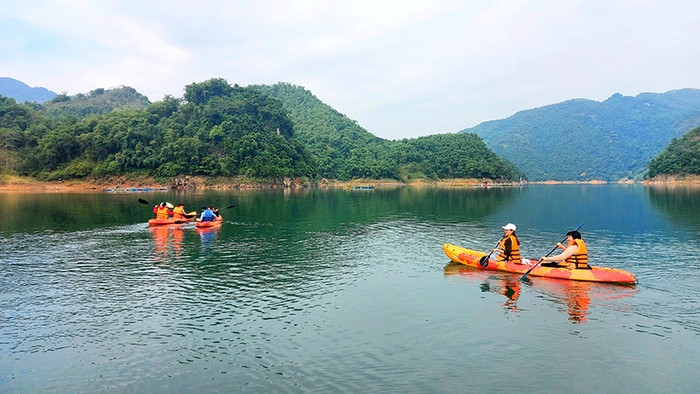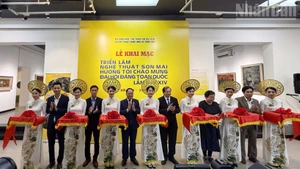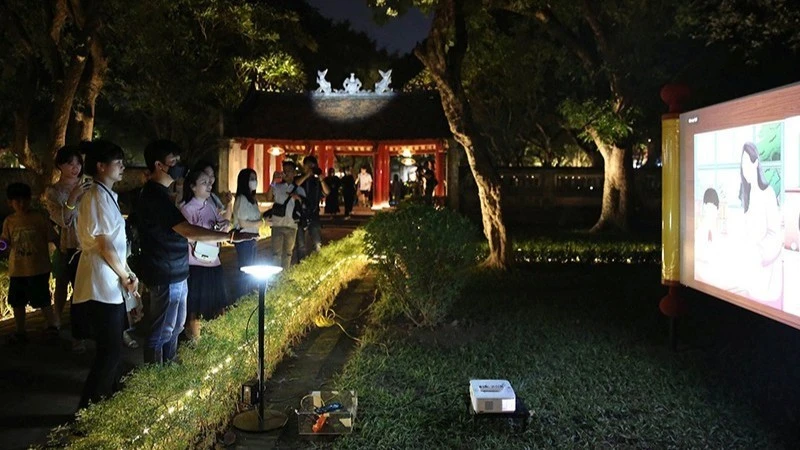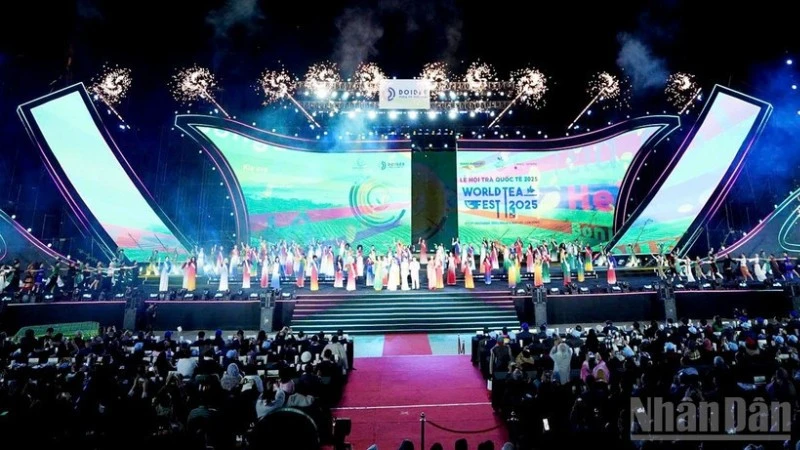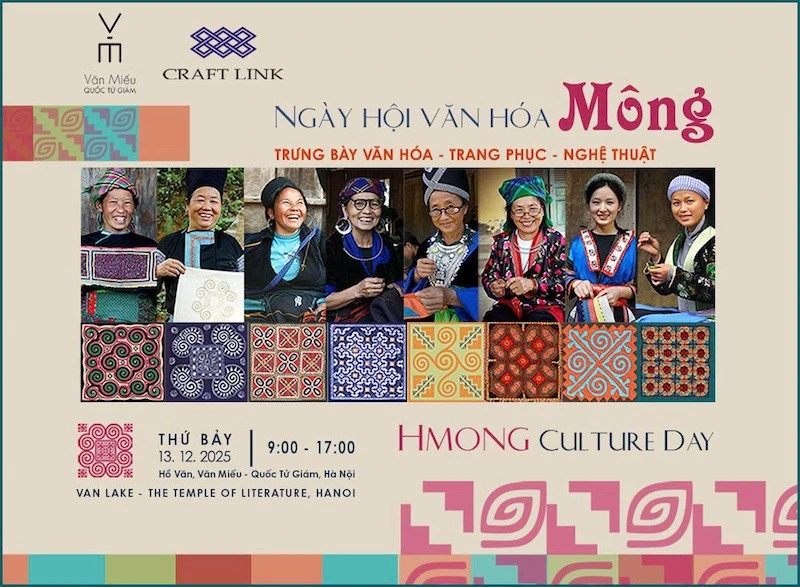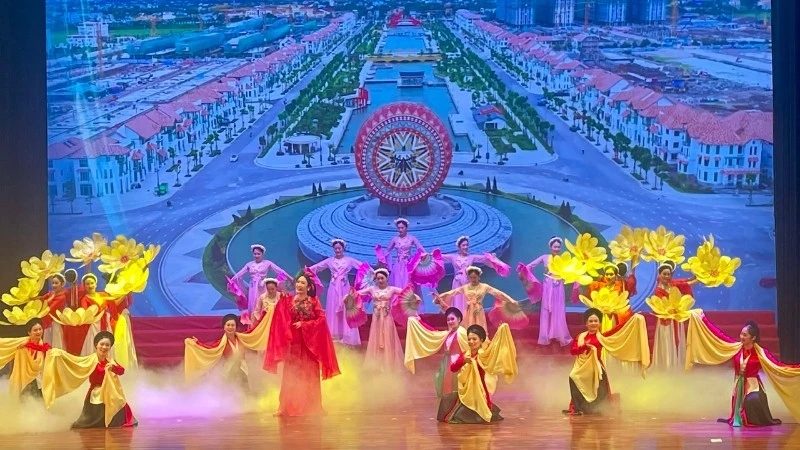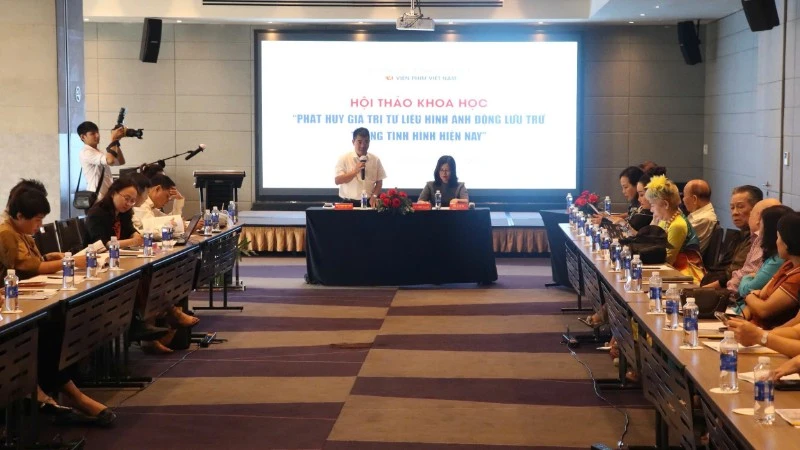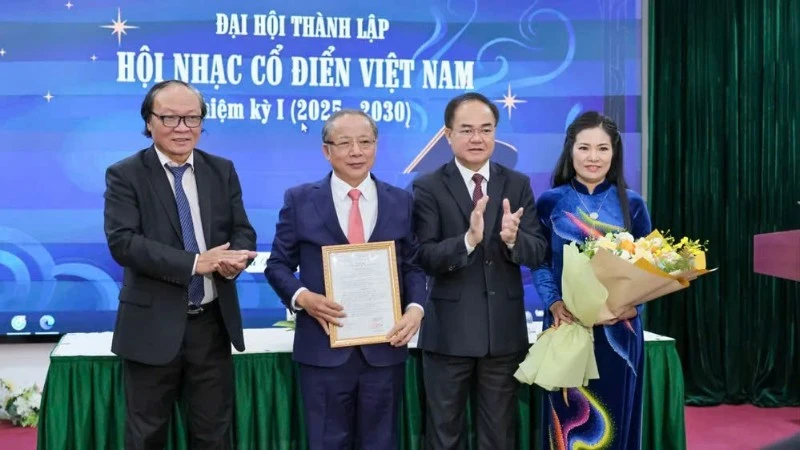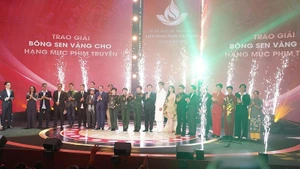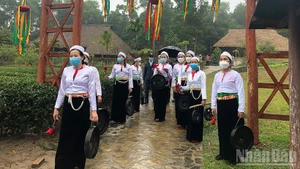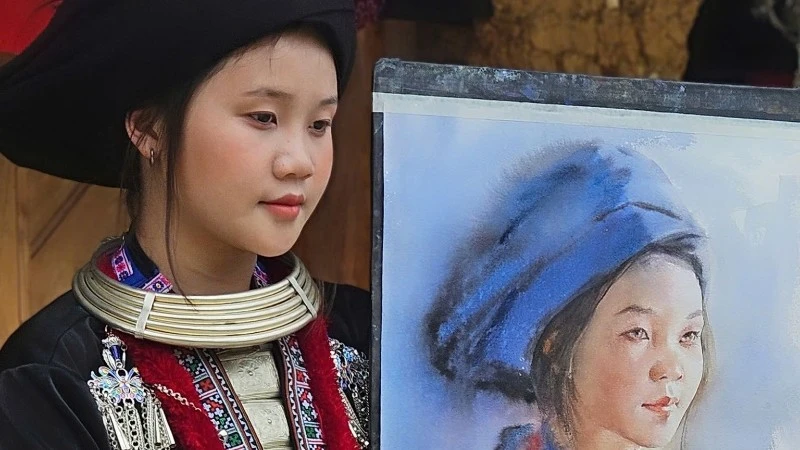Amid the context of many challenges, Muong ethnic group’s land in the northern mountainous province is still green and the locals are still persistent with faith and unremitting efforts. Right now, people in small villages along the lake are actively producing while preserving their traditional identity, waiting for the opportunity to restore cultural and tourism activities.
Perseverance to overcome difficulties
Referring to Da Bia village in Tien Phong commune, Da Bac district, Hoa Binh province, which is located in Hoa Binh Lake tourist area and was once honoured with the “ASEAN Community Tourism” Award in 2019, many visitors often remember the "self-conscious" stalls of agricultural products from Muong land that were made from bamboo and palm leaves. There were no sellers because the prices are pre-glued on the products and buyers put money into the baskets. In the afternoon when farmers came back from the fields, they just put their hands in the baskets to take the money. The origin of the self-conscious stalls dates back many decades when Muong ethnic minority people were still living in the valley, with hundreds of wide houses of stilts. When the Hoa Binh hydropower plant was constructed, villagers had to migrate to higher land. Many cultural identities have been lost in oblivion, even the houses on stilts being no longer kept intact. However, the “self-conscious" stalls are still preserved, creating the peace for the small village. The stalls also show the spirit of sharing from local people.
The community-based model in Da Bia village has attracted 33 out of 40 households to directly participate in accommodation activities, food supply and art performances. The locals have made efforts to preserve their cultural identities, customs and habits to create their special features, towards attracting more visitors.
From Da Bia, visitors can come to Ngoi village of Muong ethnic minority group in Suoi Hoa commune, Tan Lac district, about 20 km from Hoa Binh city’s centre, by waterway. Here, visitors can visit many destinations including Ngoi Hoa bay, Hoa Tien cave and Muong hamlet. The hundreds of traditional houses on stilts and many unique customs and practices have created a special charm for the locality. Previously, the local households mainly engaged in farming and fishing on the lake. However, their awareness and thinking about economic and tourism development associated with the preservation and promotion of cultural identities have been raised with various practical activities such as creating a green-clean-beautiful environment, establishing art troupes and joining training courses of skills for tourism development.
Over the past two years, the community-based tourism destinations such as Da Bia and Ngoi villages had to stop welcoming tourists several times due to the COVID-19 pandemic. Many houses on stilts are mouldy with termites and cage fish farming suffered serious damages due to the shallow water. As a result, young people flocked to industrial zones in the city to find a livelihood.
Couple Lo Van Thich and Dinh Thi Nhieu, the owners of Quang Tho homestay in Da Bia village, could not hide their sadness in saying that if there is no pandemic, their homestay is usually full of guests at the weekends. They gathered around the outdoor fire and got drunk with the songs and dances performed by the local women. All activities were forced to be stopped for a long time. With the great solidarity, the locals from the community-based tourism hamlets along the lake have joined their hands to gradually overcome the immediate difficulties. They repaired the deteriorated houses on stilts together as well as worked with the district and provincial authorities to come up with appropriate plans for consumption of caged fish.
In July 2021, Tien Phong commune has sold more than four tons of fish. The delicate and flexible response accumulated from many years of "self-conscious" stalls has been promoted. The local people have actively processed fish into many special dishes and sold widely via social networks and applications. Accordingly, Muong people’s unique stalls have spread widely, even during the most difficult time.
When the life returns to the “new normal”, the local people boost production while making efforts to preserve traditional cultural values. Members of local art troupes have practiced songs and dances; meanwhile, others have joined in cooking contests. In addition, training courses of English, communication skills and tourism promotion have been held regularly. The small hamlets, including Da Bia, have continued to supply many new books for their community libraries which were designed as close-knit houses on stilts surrounded by a flower garden and a creative space for children.

Local people guiding visitors to exploit the culture of Muong ethnic minority people. (Photo: NDO)
Flexibility in the new normal
Deputy Director of Hoa Binh provincial Department of Culture, Sports and Tourism Bui Xuan Truong said that before the appearance of the COVID-19 pandemic, the province’s tourism sector witnessed a strong development with 3.2 million tourists and over 2 trillion VND in total revenue.
However, since the early 2020, Hoa Binh’s tourism has been severely affected by the COVID-19 pandemic and most of the activities have been postponed or cancelled. Since November, when the country entered the new normal, visitors have returned to Hoa Binh lake and community-based tourism villages to experience the unique indemnity of Muong ethnic minority group.
Regarding solutions to prevent and control the epidemic and develop tourism during this stage, Truong said the locality has been facing many difficulties and challenges related to human resources, service supply chains and tourists. Therefore, the province has combined the epidemic control measures with gradually opening the tourism activities. The workers serving for tourism have been prioritised vaccinations; meanwhile, the provincial authorities have given practical support for the enterprises such as the reduction of electricity prices, aid for tour guides and provision of low-interest bank loans.
Defining community-based tourism as their strength, the districts of Mai Chau, Da Bac and Tan Lac have associated this model with the agricultural and rural development and improvement of infrastructure.
In addition, the villages developing community-based tourism have received the support from many projects and organisations in the localities. For example, Da Bac community-based tourism project has been carried out by the Action on Poverty Organisation in Vietnam, paying much attention to the preservation of traditional cultural values of Muong ethnic people and raising public awareness of children and women’s protection.
Le Cong Nang, General Director of Wondertour Tourism Company, noted that travel companies have exploited Hoa Binh’s tourism potential from not only relaxing and spiritual forms, but also sport tours. In order to overcome difficulties, they have developed safe, unique and close tours and provided media services.
Hoa Binh province issued a project on tourism development during 2021-2025 period, with a vision to 2030, and directed the plans for tourism development. The major products focused on ecotourism, spiritual traveling and extreme sports, such as boat racing, paragliding, golf and marathon.
In addition to the bright spots on the conservation and development of culture and tourism, the land of Muong people has still faced many difficulties, including the limitation in the socialisation for cultural and sport activities, the promotion and attraction of investment for development not commensurate with its potential, and the lack of qualified and specialised management staff. However, Hoa Binh is one of the destinations that is expected to have positive changes to make tourists more impressed on the land of the hospitable Muong people.
